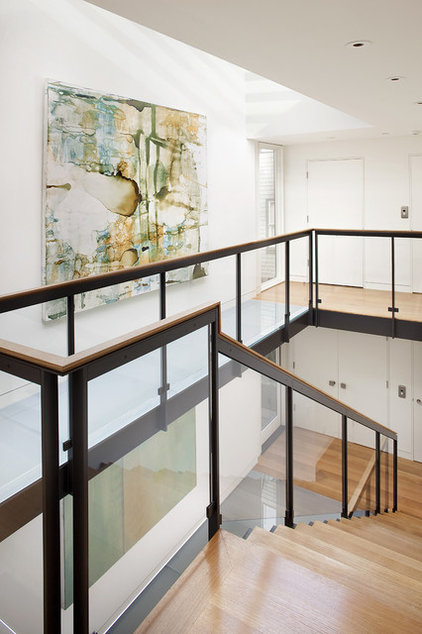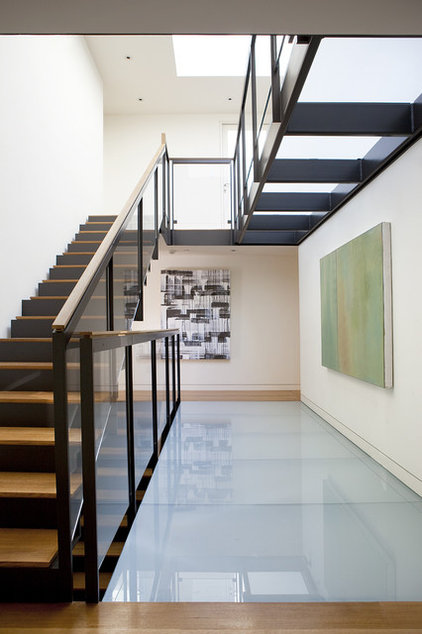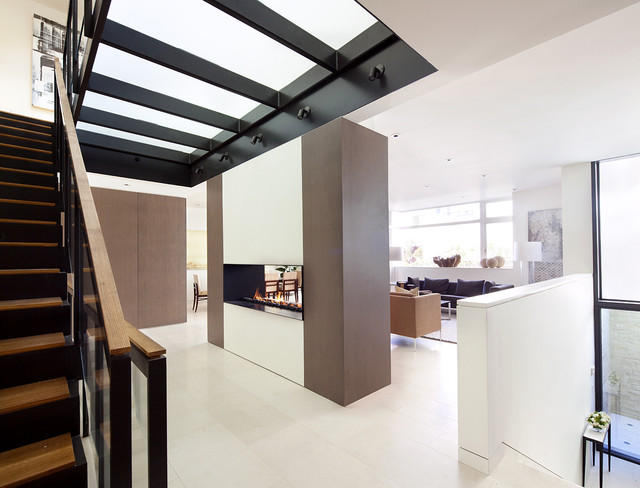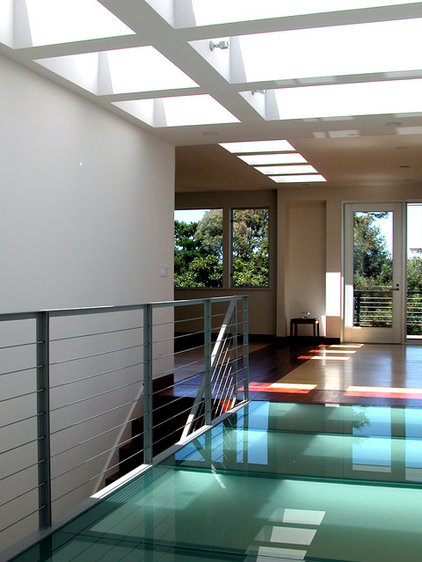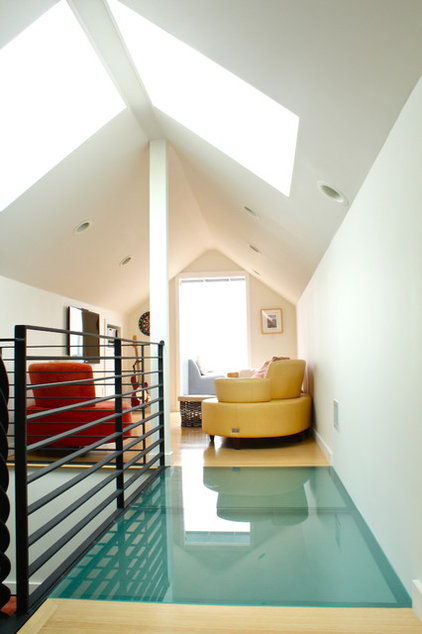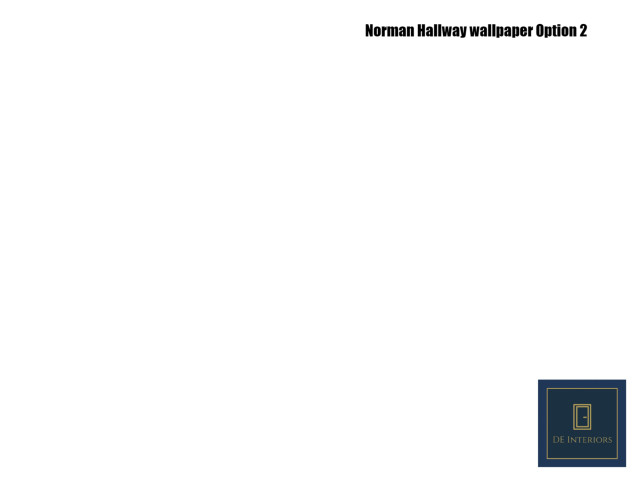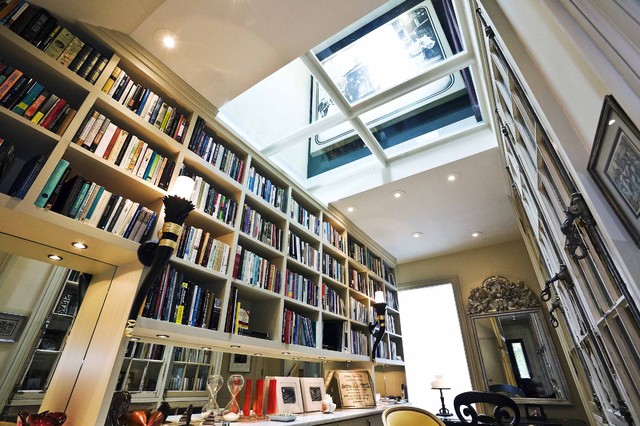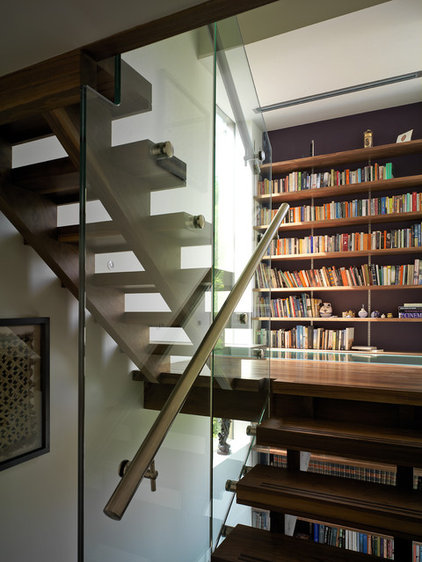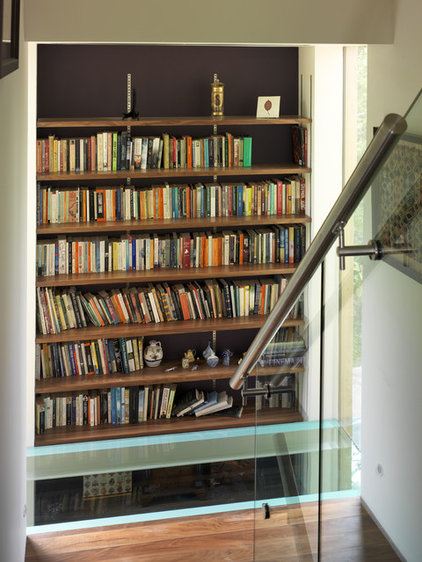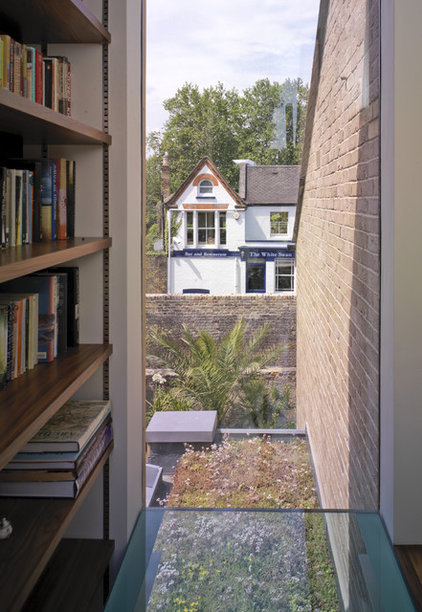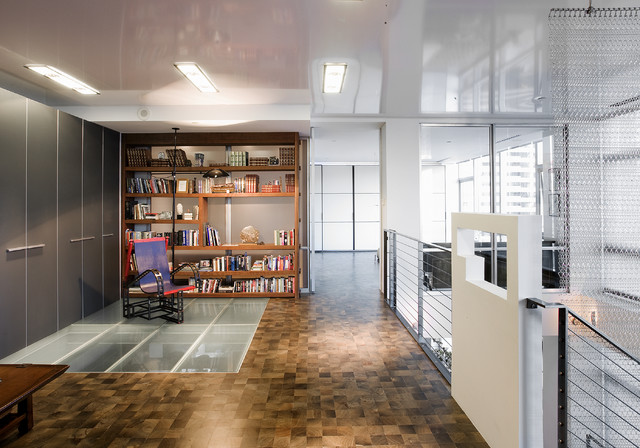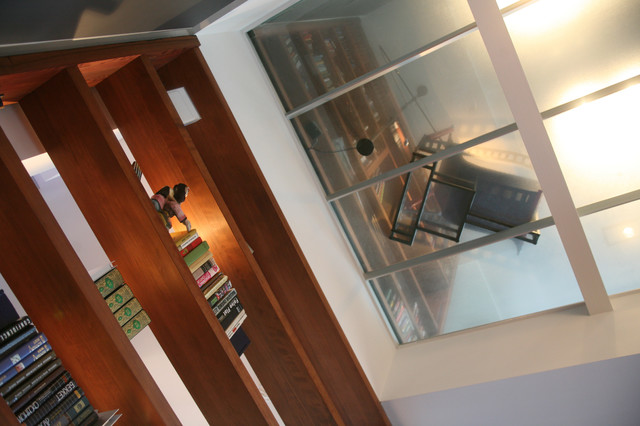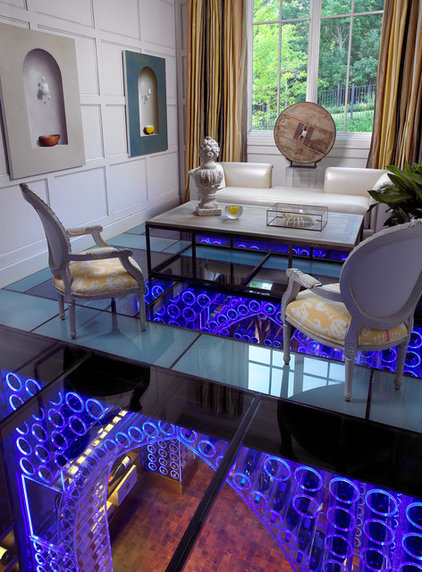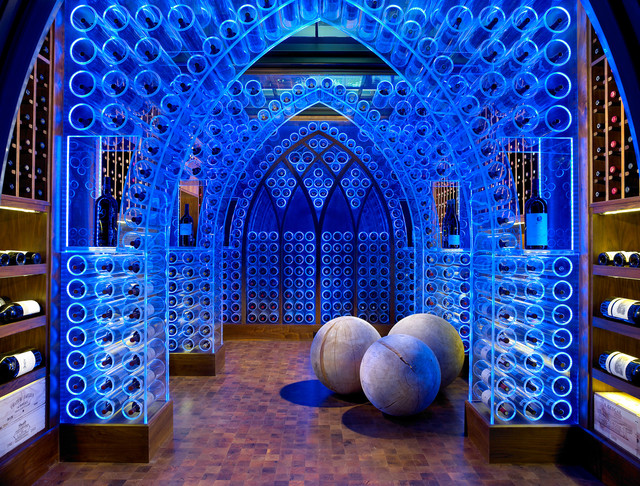Lighten Up With Glass Floors
|
On the lowest floor, the glass
floor helps bring plenty of light to the space. It presents a soft glow
that echoes the plane of the white drywall ceiling around it.
|
|
Glass floors need not be limited to
walkways or bridges. This square patch of glass floor helps bring light
to the library below.
|
|
This view shows how the
cross-shaped structural members supporting the glass give the ceiling a
strong character ... and an added sense of security.
|
|
In this multistory high-rise loft, a
glass floor is used to bring additional light to the space below it.
Sitting on a chair on a glass floor must take some getting used to!
|
|
This view from below shows some of
the light coming from above, but also how objects touching the glass are
in focus but those farther away are blurry.
|
|
It's a wine cellar, a
cathedral-like space in acrylic that glows blue. I could see the
homeowner realizing after this was installed, "I need a glass floor to
show off this space!"
|

